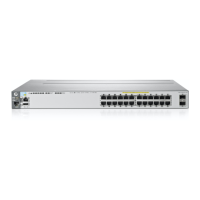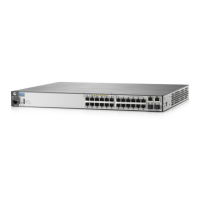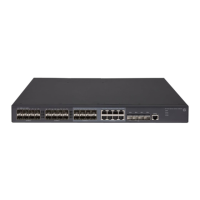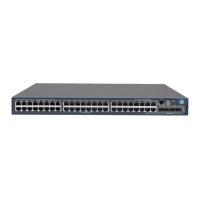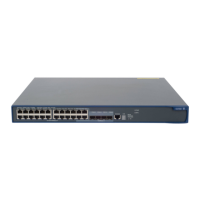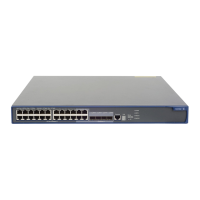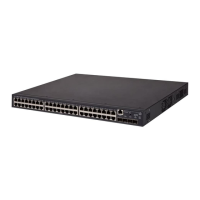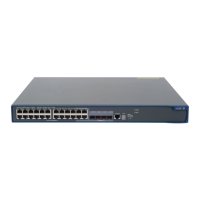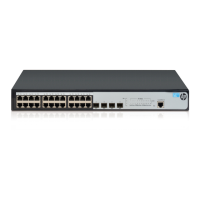Do you have a question about the HP E3800-24G-2SFP+ and is the answer not in the manual?
Overview of front panel components and LEDs on the HP E3800 switches.
Details on various network port types and configurations available on the switches.
Information on console and out-of-band management ports for switch access.
Explanation of LED indicators for status monitoring and diagnostics.
Procedures for resetting and clearing switch configurations and passwords.
Description of rear panel components like power supplies and fan tray.
Details on the stacking module for high-speed inter-switch connections.
Overview of key features and capabilities of the E3800 switches.
List of components shipped with the HP E3800 switches.
Safety and environmental guidelines before switch installation.
Steps for preparing the physical location and cabling for the switch.
Procedure to check if the switch powers on and performs self-test.
Instructions for mounting the switch in racks or on horizontal surfaces.
Steps to connect the switch to an AC power source for operation.
Guidance on connecting network cables to switch ports.
Details on supported stacking topologies and configuration.
Illustrative examples of network configurations using the switch.
Essential steps for initial switch setup via console.
Step-by-step guide for basic configuration using the console.
Options for managing the switch remotely after initial setup.
Methods for accessing and managing the switch over the network.
Instructions for safely replacing a faulty fan tray.
Procedure for replacing a failed power supply unit.
Steps to replace the stacking module, requiring switch power-off.
Initial checks for common network problems and configurations.
Interpreting LED patterns to identify switch problem conditions.
Procedures for testing switch hardware through resets and console messages.
Tests for cabling, switch-to-device, and end-to-end network communication.
Procedures for resetting configuration and updating switch software.
Information on obtaining technical assistance from HP and resellers.
Dimensions, weight, and physical attributes of the switches.
Power requirements, voltage, and current ratings for the switches.
Operating and non-operating temperature, humidity, and altitude limits.
Noise emission levels for different switch models.
Recommended cable types and standards for network connections.
Maximum supported distances for various network technologies and cable types.
Information on using special patch cords for specific fiber optic connections.
Details on pin assignments for twisted-pair network cables.
